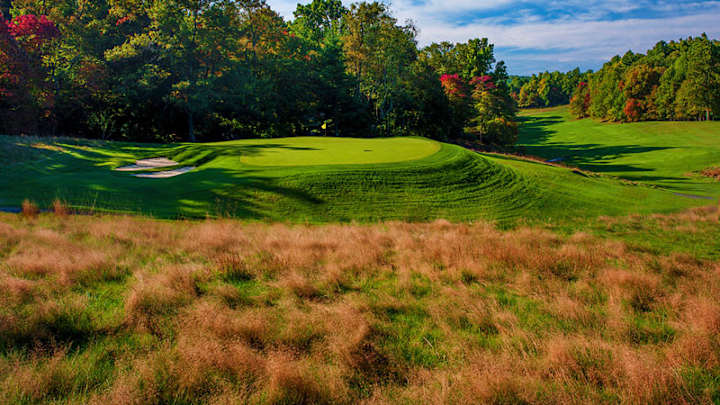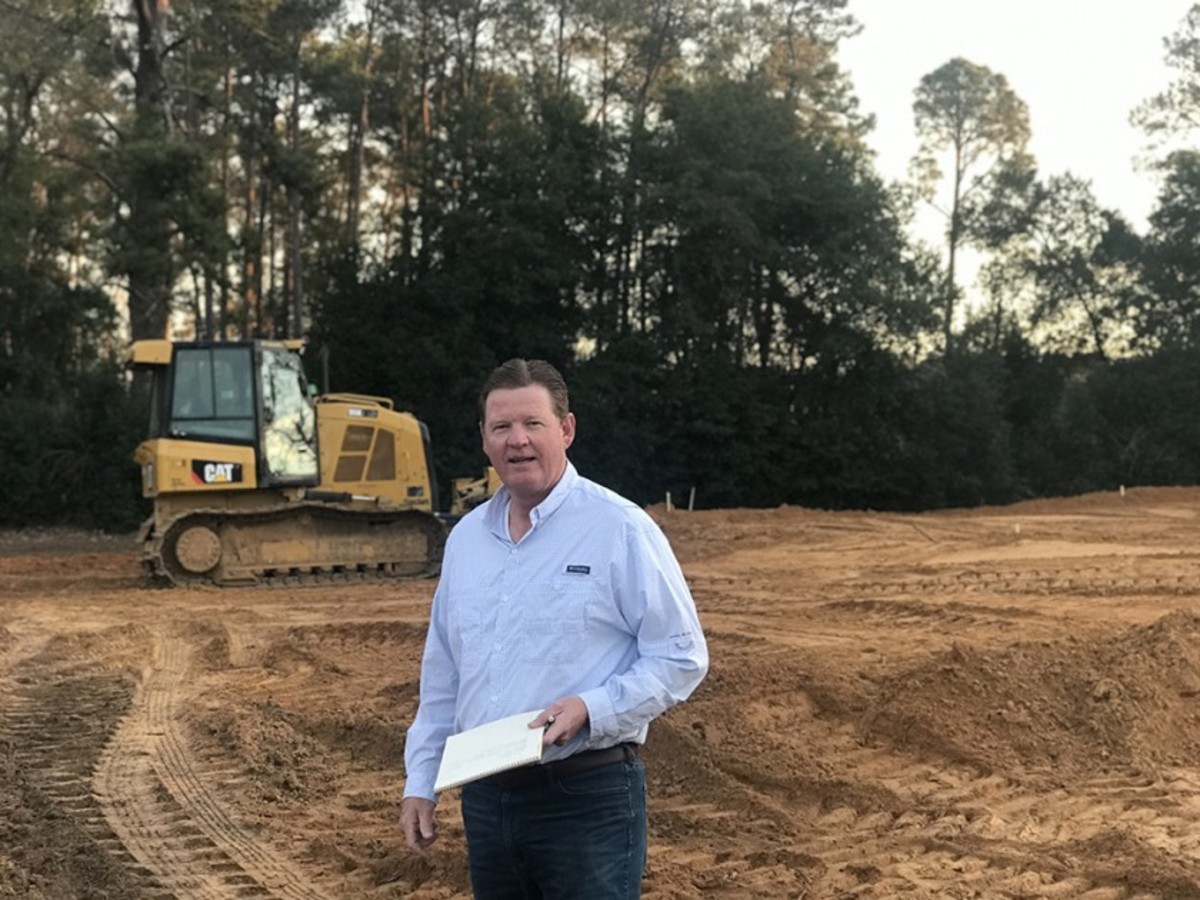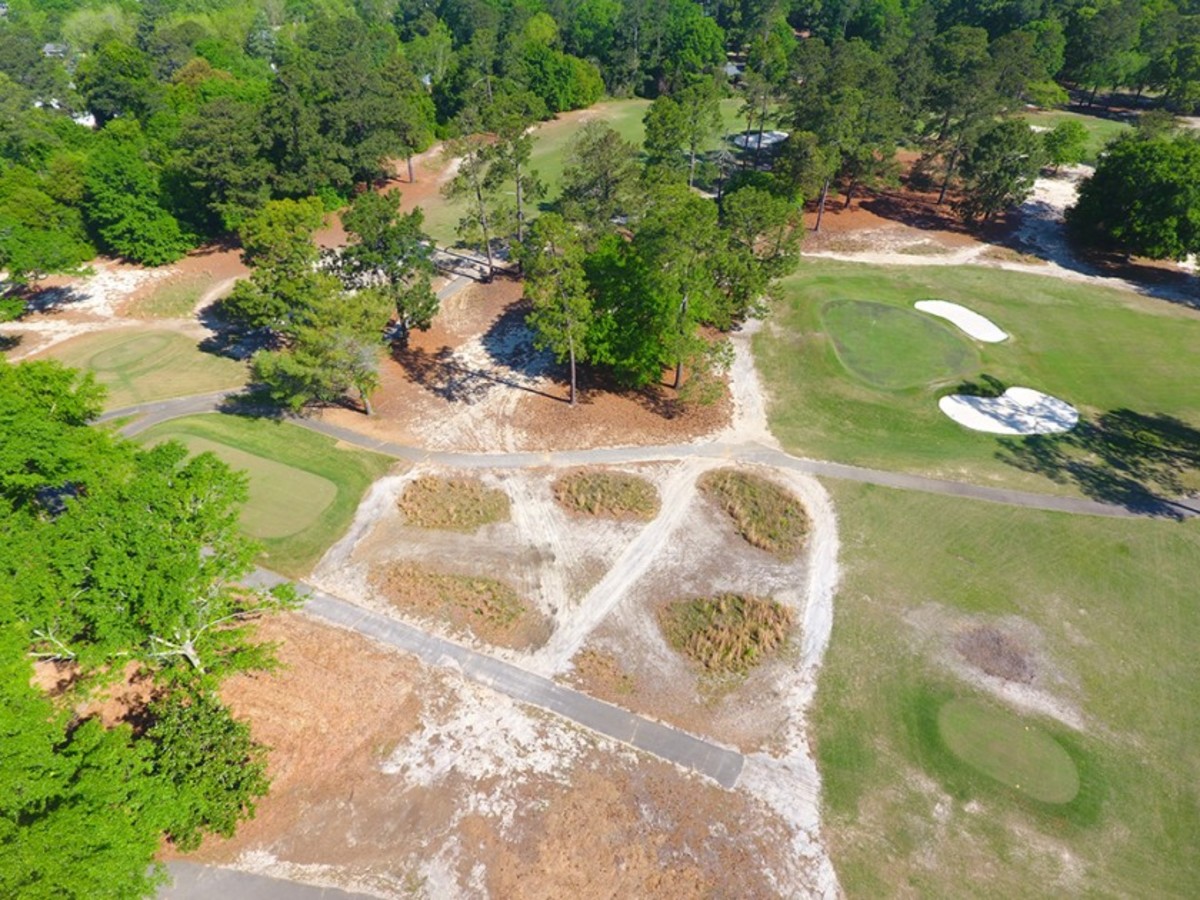Kris Spence: The golf course whisperer emerges

Over the past 20 years, the thought of architect Kris Spence as the renovation and restoration whisperer in the state of North Carolina is completely plausible.
Such hyperbole makes sense considering that outside of the Donald Ross Society and Tufts Archives, the Greensboro resident may be the foremost expert on the acclaimed designer who died in 1948. It’s not just Ross, either.
The 57-year-old Spence, owner of Kris Spence Golf Design, has studied many course sages from the halcyon days of early architecture: Charles Blair Macdonald, William Flynn, Dr. Alister MacKenzie, Seth Raynor and A.W. Tillinghast, to reel off some figures of lore.
Being so educated in classic design and known for his work as a revivalist has presented a conundrum, though. Television actors sometimes suffer the dreaded pigeon-hole label, where landing future roles become problematic. This isn’t Hollywood after all and, well, being pigeon-holed as only a restoration architect wouldn’t entirely be accurate in Spence’s estimation.
“I’m 20 years down the road in my career now,” he said. “Listen, let me be clear: I’m very blessed and very happy with what I’ve been doing, but you can’t help but sit and watch these firms turn out these wonderful golf courses.”
Translation: only a handful of designers are gobbling up new course construction, which has slowed since the 2008 recession. Spin a roulette wheel and it’s likely winning chips are on Bill Coore/Ben Crenshaw, Tom Doak, Gil Hanse or David McLay-Kidd.
“I can see why,” said Spence. “They’ve been offered these sites and they produce. They’re a safe bet.”
For Spence, he has earned countless plaudits and has a huge fan in Dunlop White III. On the Roaring Gap Club greens committee for 24 years, White worked directly with Spence when he brought Ross’ vision back to life — piecemeal from 2002-2014 for under $2 million. To this day, Spence continues to monitor how the course, located along the northwest edge of North Carolina, has been preserved even though he’s not on retainer.

White said Spence should be credited for Roaring Gap’s inclusion on Golfweek’s annual Top 100 Classic Courses list immediately upon completion of the course. It currently ranks 82nd in the U.S.
“It goes without saying that we liked the continuity of working over a long term with someone like Kris who was like-minded as it related to the architecture of the course. We liked that he was a prior superintendent, which helped him understand the issues ahead,” White said. “One great thing about Kris — he’s one of the great ambassadors of Donald Ross. He truly cared.”
And it’s not lost on White that the Roaring Gap Club membership, undersized prior, capped post-renovation. There is a waiting list now, he said.
Moreover, White attributed the return of PGA Tour stop, the Wyndham Championship (formerly the Greater Greensboro Open), solely on Spence’s Sedgefield Country Club makeover.
“Rarely does a restoration unfold to help lure home an old PGA Tour event after 31 years,” said White. “That’s exactly what happened with Sedgefield. “I can’t speak highly enough about the results of his restoration work and how it has improved golf in North Carolina.”
After renovating at least eight top 100 courses — just a fraction of his overall oeuvre that includes more than 60 reclamations – Spence continually wondered when he’d get his big break.
He just wanted a chance to see what he could do with a tract of land, how he could mold it in his vision. Admittedly, he passed on opportunities in Florida that he said maybe he should have taken. After those, he waited. And waited.
Finally, last spring, he got the big break.
“It’s one of those rare opportunities I would hope would come and it finally did,” Spence said.
Only recently announced, the old Sunset Country Club in Sumter, S.C., enlisted Kris Spence Golf Design and Jack Nicklaus II of Nicklaus Design. The project, $5.5 million for the 18-hole layout, is set to be completed by November with Spence’s old school concept. Further, Spence is leading designer on-site and constructing it with his design-build company, Spence Golf Inc.

More on that in a bit. How the 6-foot-5-inch Spence ever got to this point is a tale unto itself.
Growing up in rural Steele, Mo. — population 2,000 people — Spence at 10-years-old had his first introduction to golf when he discovered clubs and balls that a neighbor of his grandmother’s left behind during a move. His city was so small that it didn’t have a golf course. Just as well, because he became smitten with pretending to be Jack Nicklaus as he hit balls.
“He was the man at the time,” Spence said, “so I would act like I was him at tournaments trying to fulfill certain shots.”
It would be another two years until Spence stepped onto his first course. In the meantime, he improvised. His first test at design happened inauspiciously. Believing he needed a green in his back yard, he got to work. Except the grandiose plan never was relayed to his father.
“My dad was not home, at work or somewhere, but I ended up tilling a circle that would serve as the green and got some bentgrass seed. I borrowed my grandmother’s reel mower but had no idea it wasn’t going to mow close enough. Suffice to say, when my dad got home and saw I had tilled a circle and planted seed, he was not happy,” said Spence, chuckling.
The architectural seed — so to speak — had taken root in his mind.
As he progressed through the junior golf ranks, he found himself “doodling” drawings of greens he had been studying. The contours. The topographies. It was all visceral, for he knew where his heart would eventually lead him.
He excelled as a player, earning a golf scholarship at Arkansas State University. But he transferred to the then-known Lake City Community College because it had a two- to three-year golf course operations program that piqued his interest.
Spence found enlightenment, immersing himself in books on classic designers, particularly Flynn and Ross. Upon graduating in 1985, he joined Forest Oaks Country Club in Greensboro, where he remained for four years.
While helping build Governors Club outside Chapel Hill with Nicklaus Design shortly thereafter, Greensboro Country Club approached him about becoming the superintendent. Its history appealed to Spence. The Irving Park course, constructed in 1924, was eventually redesigned by Ross.
By this time, Spence’s passion with Ross — who also started his career as a superintendent — had mushroomed. He made trips to Pinehurst No. 2, widely considered one of Ross’ masterpieces, to understand how he built the course from Sandhills’ sandy parcel.
When he first arrived at Greensboro, club officials spoke often about restoring Ross’ heritage. Spence joked that he saw vestiges of Ross’ trademarks, but not many due to the redesign Irving Park underwent by George Cobb in the 1960s.
“I think because I talked about Ross’ influence so much, they just said, ‘You do it,’” said Spence. “That’s when it got real, and real scary.”
This occurred during the early stages of the Ross restoration boom in the mid-1990s.
When the project was done to raves circa 1997, word got out. The Omni Grove Park Inn in Asheville, N.C., called Spence about its neglected course.
Spence viewed it as a watershed moment. If ever he needed an epiphany, this was it. He decided to go it alone, forming his own golf design and construction firm in 2000 with a bent on restoring courses.
In accepting the $2.5 million assignment, Spence found Ross had remodeled The Omni Grove in 1926 and the layout suffered the wrath of Mother Nature. Green complexes and bunkers had eroded to the point that Ross’ genius became as unrecognizable as a serial Botox patient.
Donald Ross Society founder Mike Fay called the course hopeless.
“It was the early 1990s and they called me to come and evaluate the course,” Fay said. “I went there the next morning, played 11 holes, drove back to the clubhouse, handed the room key back to the pro and said, ‘This is not only the worst Donald Ross course there is in the world, but this is the worst golf course in the world.’
“So a couple years go by and I get a call again from the pro. … I ended up going and it was truly incredible. And who do I meet for the first time? Kris Spence. He did an unreal job.”
Fay and Spence would go on to work together on several Ross ventures in North Carolina and Virginia over the years. According to Fay, Spence took control with aplomb, calling him “the teacher.”
“Kris is a pro’s pro at what he does,” added Fay, now Captain Emeritus of the Donald Ross Society. “Not only does he know his stuff, but he knows how to translate it. Anybody can know the stuff, look at the plans and see the pictures, but it’s about knowing how to put it into the ground and make it work.”
As Spence’s stature grew, the opportunities compounded like moths to a single light. He ingratiated himself to Raleigh, N.C.-based McConnell Golf, which owns 14 properties between Tennessee, North Carolina and South Carolina.
He restored four of McConnell Golf’s properties — the latest being the Charlotte’s Providence Country Club in 2018. During that restoration Spence functioned as the architect and construction manager.
“Kris Spence has delivered a golf course that is totally unique from the course we had before,” said McConnell Golf founder and CEO John McConnell in a statement. “I am truly impressed with the new look, as he took a very flat golf course and made it feel much more dramatic to play. … I think he retained the playability for all levels of golfers.”
Despite the successful niche, something gnawed at Spence. His eagerness to one day create his own layout grew palpably. After the golf course construction boom fizzled faster than a dud bottle rocket in 2008 due to the recession, opportunities dried up.
It continued into the late 2010s, leaving Spence wondering if he’d ever get to make his mark.

“I haven’t had that opportunity before. Only in bits and pieces,” he said.
When the Sunset Country Club deal formalized last April, the mild-mannered Spence almost couldn’t contain himself. He felt like the child presented with a new puppy, excitement coursing through his veins.
When he first interviewed with course owners, brothers Greg and Lewis Thompson, he was blunt: the old 18-hole routing wasn’t salvageable, especially the tired back nine holes. With a 1921 front nine meshed with a 1980s back nine, there was zero continuity. It was like pairing a plaid shirt with striped pants.
“I told them, ‘You will never renovate that routing on the course,’” said Spence.
That’s invariably what earned him the job.
Spence is thrilled because in the world of architectural opportunities, most sought-after land for new course design is predicated on natural sandy sites. Why? Because such properties provide excellent drainage, economical construction, above average firm and fast playing conditions, and they’re aesthetically pleasing. The Sunset CC, renamed the Quixote Club, fit every category. Spence said it’s much like what Pinehurst No. 2 sits upon.
“We understand that members will have to make a sacrifice during this construction phase,” said Greg Thompson. “This you can trust: it will be worth the wait.”
Spence’s plan calls for sand exposure and dramatic visuals, using natural resources of the land to create contrast and use of bunkers and hazards.
But it’s more than that.
“What it does for me is it will allow me to create something I would consider a masterpiece under my umbrella, mainly because I’ve done so much model restoration at existing clubs,” said Spence. “There is a lot of fixed boundaries, restrictions and limits to doing that. We’ve got an open slate where we can create a new golf course and a new experience.”
Which suits him just fine. He just wanted a chance.
“Now I can show the world what I’ve got and what I can do,” he said. “Now it’s up to me deliver, and Jackie as well.”
Sign up to receive the Morning Read newsletter, along with Where To Golf Next and The Equipment Insider.
